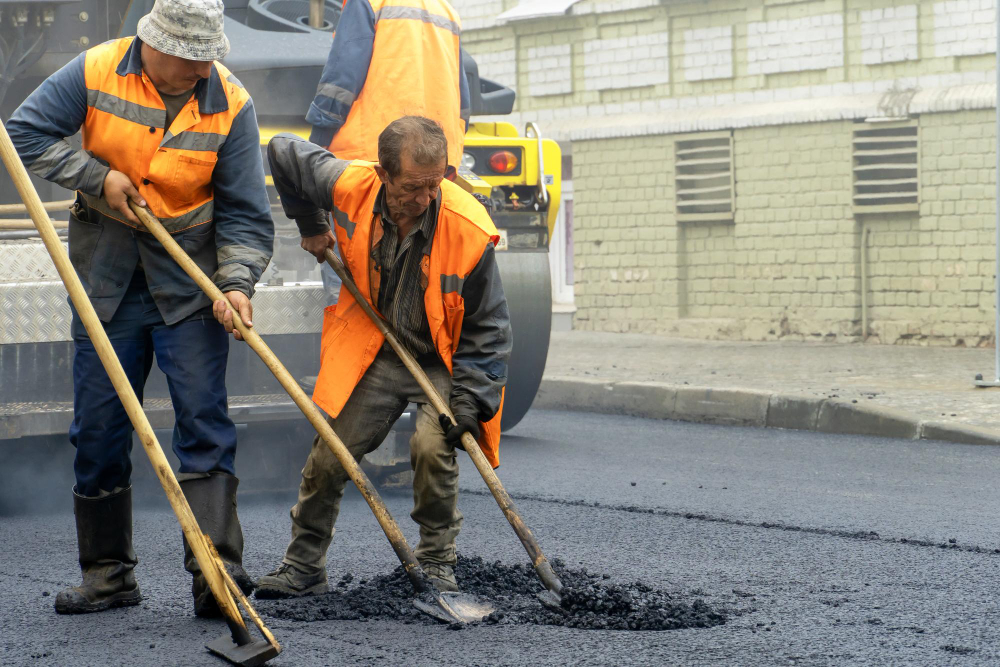
Your property's parking lot or driveway is a valuable asset. When you notice a crack or a pothole, you know it's time for a repair. But when you start researching solutions or talking to contractors, you might hear a lot of unfamiliar terms. Words like "alligator cracking," "raveling," and "sealcoating" can make the process feel more complicated than it needs to be.
Understanding the language of asphalt repair is essential for any property owner. It helps you accurately describe the problems you're seeing and empowers you to have informed conversations with paving professionals. Knowing these terms ensures you can properly evaluate their proposed solutions and make the best decisions for your property's maintenance. This guide will walk you through the key asphalt repair terminology, making you more confident in managing your pavement.
Before you can fix a problem, you need to be able to identify it. Pavement damage comes in many forms, each with its own name and cause. Here are some of the most common issues you'll encounter.
Also known as fatigue cracking, this pattern of interconnected cracks looks like the scales on an alligator's back. It's a serious sign that the pavement's foundation is failing. Alligator cracking usually happens in areas that handle a lot of heavy traffic. The repeated stress weakens the sub-base, causing the surface to break apart. If you see this, it's a signal that you need significant asphalt repairs, possibly including a full-depth patch.
Block cracking appears as large, rectangular cracks on the pavement surface, almost like a checkerboard. These cracks are not caused by traffic. Instead, they are the result of the asphalt binder shrinking and hardening over time due to temperature changes. While not as structurally severe as alligator cracking, block cracks allow water to seep into the pavement's foundation, which can lead to more serious problems if left untreated.
Potholes are the bowl-shaped holes that are all too familiar to property owners. They start as small cracks that allow water to penetrate the asphalt. This water weakens the base layer beneath. The combination of water damage and the stress of traffic causes the asphalt to break down and pop out, creating a hole. Potholes are not just an eyesore; they pose a significant safety hazard to both vehicles and pedestrians. Timely asphalt repairs are crucial to prevent them from growing larger.
Raveling is when the surface of the asphalt starts to come apart, dislodging the fine aggregate particles and leaving a rough, rocky texture. This often occurs as the asphalt ages and the binder that holds the aggregate together oxidizes and weakens. It can also be a sign of a poor-quality initial paving job. Raveling makes the surface noisy to drive on and reduces skid resistance.
Once you've identified the type of damage, the next step is understanding the solutions. Contractors use specific terms to describe different repair methods.
Crack sealing is one of the most common and cost-effective asphalt repairs. It involves cleaning out individual cracks and filling them with a hot-applied, rubberized sealant. This flexible material prevents water and debris from getting into the cracks and causing further damage to the pavement's foundation. It's a proactive maintenance step that can significantly extend the life of your asphalt.
Sealcoating is a preventive maintenance process, not a structural repair. It involves applying a thin layer of a protective coating over the entire asphalt surface. This coating acts as a shield against the elements that degrade asphalt, such as UV rays, water, and automotive fluids like oil and gasoline. A fresh sealcoat gives your pavement a rich, black finish, improving its appearance while extending its lifespan. Experts recommend sealcoating your property in Orlando, FL every 2-3 years.
Patching is used to repair localized areas of damage, like potholes or sections with severe alligator cracking. There are a few different patching methods:
Asphalt milling is the process of removing the top layer of an asphalt surface without disturbing the underlying sub-base. A large milling machine grinds up the old, damaged asphalt to a specified depth. This is often done to correct surface irregularities, improve drainage, or prepare the surface for a new layer of asphalt. The milled asphalt can also be recycled and used in new paving projects.
An asphalt overlay, also known as resurfacing, involves applying a new layer of hot mix asphalt over the existing surface. This is typically done after the surface has been milled and any underlying structural issues have been repaired. An overlay provides a brand-new, smooth wearing course, effectively renewing the pavement's surface and extending its life for many years. It's a cost-effective alternative to complete reconstruction when the foundation is still in good condition.
Knowing this terminology puts you in a much better position to care for your pavement. You can now walk your property, identify specific issues like block cracking or raveling, and understand what a contractor means when they recommend a full-depth patch or a simple sealcoat. This knowledge helps you ask the right questions and ensure you're investing in the most effective asphalt repairs for your needs.
Don't let pavement problems get worse over time. Addressing issues early can save you from more expensive and extensive repairs down the road. If you've noticed any of these signs on your property in Orlando, FL, it's time to take action.
If you need professional asphalt repairs in Orlando, FL, our team is ready to help. At Florida Sealcoating, we have the expertise to diagnose your pavement issues and recommend the most effective solutions. Contact us today for a free, no-obligation estimate and let's get your property back in top condition.